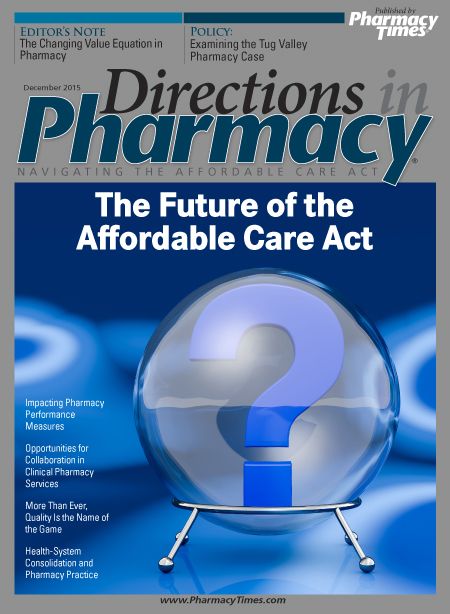Publication
Article
Pharmacy Practice in Focus: Oncology
The Changing Value Equation in Pharmacy
The new buzzword in health policy circles is value.
The new buzzword in health policy circles is value. Certainly, many of the coverage aspects of the Affordable Care Act (ACA) have been the subject of widespread and spirited discourse, but many of the less-politicized and less-talked-about elements of the ACA include numerous attempts to catalyze payer and provider “accountability”, through risk and reward, in the “value” domain. Recent variations in payment models in both the private and public sectors, such as quality-reporting bonuses, shared savings, bundled payments, and partial risk contracting, all maintain mechanisms to incentivize value. And full-risk (insurance product) contracting, at both the state and federal levels, has continually evolved to emphasize value alongside the conventional objective of controlling cost. Examples include programs like Star Ratings for Medicare Advantage and Prescription Drug Plans.
But what is value? Don Berwick’s “triple aim” of “improving the experience of care, improving the health of populations, and reducing per capita costs of health care” 1 reflects a pivotal change in the perception of value on the part of stakeholders. The “big idea” is that the preferred manner, in which to reduce overall utilization (cost), is to reduce the demand for health care utilization through positively changing health trajectories, thus, lessening the need for hospitalizations and the like, rather than relying exclusively on restricting supply or access (eg, prior authorization) as the means to lower costs. This more nuanced and evolved view of value is of particular importance to pharmacy, whose primary charge is to achieve downstream reductions in utilization through better health from optimal use of medications.
A quick review of Merriam-Webster’s multiple definitions of “value” highlight the importance of this nuance:
1) Something that can be bought for a low or fair price
2) The amount of money that something is worth
3) Usefulness or importance2
The first definition well represents the predominant historical view of insurers on the value of drugs and practice of pharmacy. Value was (and still is, in large part) achieved through the lowest-cost purveyor of a given drug product. However, the second definition introduces worth, and is starkly different from the first. In terms of pharmacy practice, the first definition considers only cost, with the objective being to minimize the cost of acquiring or covering medications as the singular and sole objective in the value equation. The second definition certainly considers the cost of medications and their distribution and dispensing, but layers in whatever benefit or return accompanies that cost. Importantly, the second definition actually considers the benefit back to the purchaser, and/or risk holder, and/or patient, and/or care team member. This begs the question: is there any benefit that comes from the conventional practice of pharmacy (regardless of the care setting) beyond the distribution and dispensing of medications? Let’s hope so.

The third definition of value holds great promise for the profession. In this version of the interpretation of value, externalities (the losses or gains in benefit to one party resulting from an activity of another party) are considered. That is, medications and medication optimization services that improve the patient’s health and the experience —leading to lower overall utilization and costs, across the entire spectrum of care—are considered in the value equation. Under the third definition of value, medication optimization services are viewed as useful and important in the new system of financing and care delivery.
As we near 2016, Directions in Pharmacy will be transitioning from providing readers with bimonthly issues on specific themes, to providing weekly articles on the most relevant and timely topics in the industry, and quarterly collections which are of most interest to our readership. The mission of Directions in Pharmacy is to publish articles that examine how health care reform, and other emerging environmental factors, are influencing the profession, practice, and business of pharmacy. We endeavor to continue to engage luminary authorship and develop content that provides insight and understanding to our readers that enable informed strategic decisions, regardless of the type or location of your pharmacy practice. We recognize that pharmacy practice is constantly evolving, and believe this new publishing model will better meet our readers’ needs. Though we will seek authorship and topics that are timely, relevant and diverse, the common denominator, among all of them, will be value—the new North Star of our health care system.
If you are interested in contributing to Directions in Pharmacy in 2016, please review our Call for Papers for more information.
References
1. Berwick DM, Nolan TW, Whittington J. The triple aim: care, health, and cost. Health Aff (Millwood). 2008;27(3):759-769. doi: 10.1377/hlthaff.27.3.759.
2. Simple definition of value. Merriam-Webster website. merriam-webster.com/dictionary/value. Accessed December 8, 2015.







